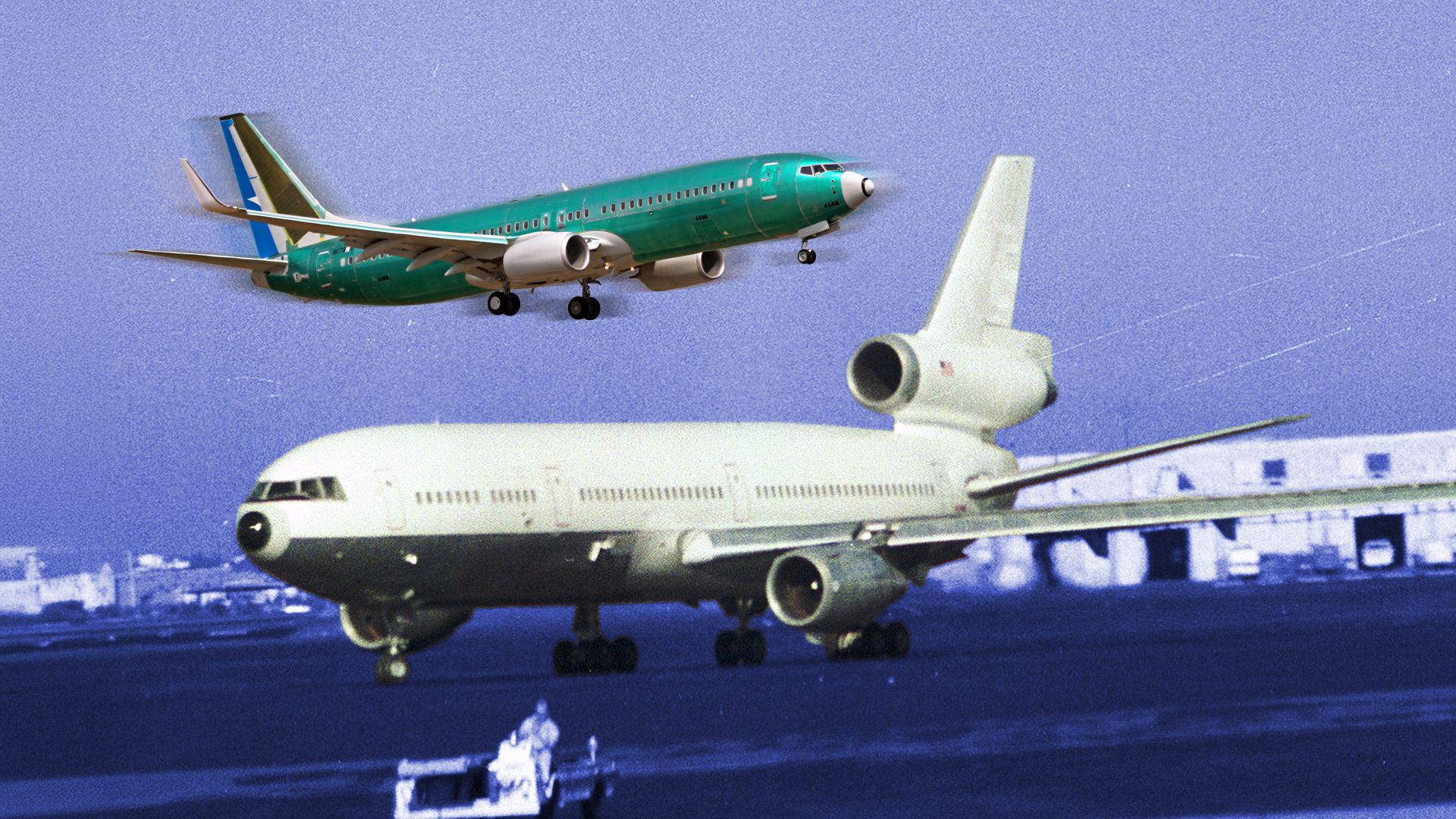World
Boeing’s Strategic Merger with McDonnell Douglas: A Mixed Legacy

Boeing’s merger with McDonnell Douglas in 1997 aimed to bolster its military capabilities while addressing challenges in the commercial aviation sector. This merger combined Boeing’s established reputation with McDonnell Douglas’s lucrative military division, but it also introduced a series of complications that have impacted Boeing’s standing in the aerospace industry.
Historical Context of Boeing and McDonnell Douglas
Boeing has been a leader in the manufacturing of commercial aircraft since the introduction of the Boeing 707 in the 1950s, which played a significant role in ushering in the Jet Age. Prior to this, Douglas Aircraft Company dominated the market with its iconic DC-3, which at one point transported 90% of the world’s passengers. Douglas continued to thrive with models like the DC-8 and DC-9 during the 1960s despite Boeing’s rise. However, by the late 1960s, faced with financial difficulties and a need for expansion, Douglas merged with McDonnell Aircraft to form McDonnell Douglas.
The newly formed McDonnell Douglas had initial success with the DC-10 but struggled with profitability in its commercial division. The company’s military division, however, thrived, producing notable aircraft like the F-15 Eagle and F/A-18 Hornet. By the time of the 1997 merger, McDonnell Douglas’s commercial aircraft division was faltering, prompting Boeing to see the military sector as a strategic opportunity.
Boeing’s Motivations for the Merger
Boeing’s decision to merge with McDonnell Douglas stemmed from a desire to diversify its portfolio and reduce reliance on the volatile commercial aviation market. At the time, McDonnell Douglas’s military division was a valuable asset, producing some of the most advanced military aircraft in use today.
Following the merger, Boeing quickly phased out the struggling MD-11 and MD-90 models, rebranding the MD-95 as the Boeing 717-200. Despite initial hopes, the 717 failed to gain significant market traction and production ceased in 2006.
The merger also brought about significant changes in Boeing’s production strategy, particularly with the development of the 787 Dreamliner. The Dreamliner promised to improve fuel efficiency and passenger capacity but ultimately faced numerous production delays and quality control issues. These challenges were exacerbated by a shift towards outsourcing more components, which led to logistical difficulties and increased costs.
Moreover, the 737 MAX series, which was developed under the leadership of then-CEO James McNerney, faced catastrophic setbacks. The decision to re-engineer the 737 instead of designing a new aircraft resulted in the implementation of the MCAS system, which was implicated in two fatal crashes in 2018 and 2019. This crisis severely damaged Boeing’s reputation and led to a prolonged grounding of the aircraft.
Boeing’s leadership transitions post-merger, particularly under CEOs like Phil Condit and Harry Stonecipher, have shaped the company’s trajectory. While Boeing emerged as the surviving brand from the merger, the influence of McDonnell Douglas’s management has lingered in the company’s culture and decision-making processes.
As Boeing grapples with the legacy of the merger and seeks to restore its reputation, it faces the ongoing challenge of navigating the repercussions of strategic decisions made during a different era. The company must balance its military and commercial interests while addressing quality control issues that have plagued its production lines.
In summary, Boeing’s merger with McDonnell Douglas was intended to fortify its military capabilities and mitigate the risks associated with the commercial sector. However, the integration of the two companies has resulted in a complex legacy that continues to influence Boeing’s operations and reputation in the aerospace industry.
-

 Science3 months ago
Science3 months agoToyoake City Proposes Daily Two-Hour Smartphone Use Limit
-

 Top Stories3 months ago
Top Stories3 months agoPedestrian Fatally Injured in Esquimalt Collision on August 14
-

 Health3 months ago
Health3 months agoB.C. Review Reveals Urgent Need for Rare-Disease Drug Reforms
-

 Technology3 months ago
Technology3 months agoDark Adventure Game “Bye Sweet Carole” Set for October Release
-

 World3 months ago
World3 months agoJimmy Lai’s Defense Challenges Charges Under National Security Law
-

 Lifestyle3 months ago
Lifestyle3 months agoVictoria’s Pop-Up Shop Shines Light on B.C.’s Wolf Cull
-

 Technology3 months ago
Technology3 months agoKonami Revives Iconic Metal Gear Solid Delta Ahead of Release
-

 Technology3 months ago
Technology3 months agoApple Expands Self-Service Repair Program to Canada
-

 Technology3 months ago
Technology3 months agoSnapmaker U1 Color 3D Printer Redefines Speed and Sustainability
-

 Technology3 months ago
Technology3 months agoAION Folding Knife: Redefining EDC Design with Premium Materials
-

 Business3 months ago
Business3 months agoGordon Murray Automotive Unveils S1 LM and Le Mans GTR at Monterey
-

 Technology3 months ago
Technology3 months agoSolve Today’s Wordle Challenge: Hints and Answer for August 19









